BMW 840i/850i - Buyer's Guide





















|

|

|

|

|

|

|

|

|

|
It has all the makings of a classic, so why is it not?
BMW 840i/850i
The BMW 8 Series is commonly misunderstood as little more than the successor to the E24 6 Series which ended production in 1989, and didn’t reappear until the E63 of 2003.
The E31 8 Series however, produced from 1990 to 1999, was aimed at an entirely different – much higher status – sector.
While classic BMWs are enjoying a bit more of the limelight these days in the collector world, the E31 8 Series hasn’t quite found its place yet.
Is it simply not remembered by those who would have dismissed it for its exorbitant price tag when new?
Or is it still too young to properly reach collector status?
 More GT than sports car, the 8-Series was aimed at different buyers
More GT than sports car, the 8-Series was aimed at different buyers
On paper, it has all the makings of a great: avant-garde pillarless looks, wall-to-wall leather and luxury, and all of the tech you would expect from a German marque’s ultimate flagship born at the turn of the millennium. And did we mention the glorious V12 engine?
| Read next: The BMW 8-series returns
But the 8 Series has long struggled with its perception. As aforementioned, some simply saw it as a spiritual successor to the then-absent 6 Series, with one helluva price increase!
Others saw the engine options and assumed it to be a scalpel-sharp supercar.
But in reality, it was neither of these. While its performance stats heavily outclassed the old 6 Series, it was always meant to be a personal luxury super coupe, more for grand touring rather than bashing corners.
When you look at the car as a smooth highway-demolishing cruiser – it makes a bit more sense in a retrospective classical context.
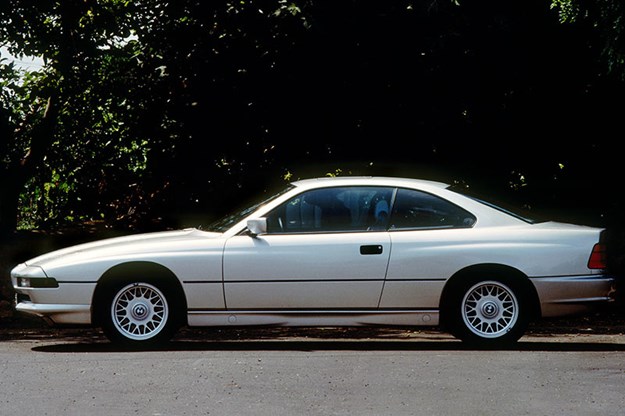
Regardless of its perception when new, the BMW 8 Series was absolutely ground-breaking in many ways. You can put its struggles of perception down to the fact that it really was an attempt by BMW to create a segment, that really only became popular years later.
Look at the more modern Bentley Continentals, elongated Mercedes-Benz S-Class coupes, and even more contemporary two-door Rolls-Royces. That was the space the 8 Series wanted to play in, and this was 1990!
BMW invested over $1.5 billion Deutsche Marks developing the 8 Series, and it was designed – unconventionally at the time – entirely on a computer, backed up by further and extensive wind tunnel testing. The 850i was also only the second post-war German car to be fitted with a V12. Also a fun fact, is that the same V12 block from BMW eventually found itself under the rear hatch of the McLaren F1, the then-fastest car in the world.
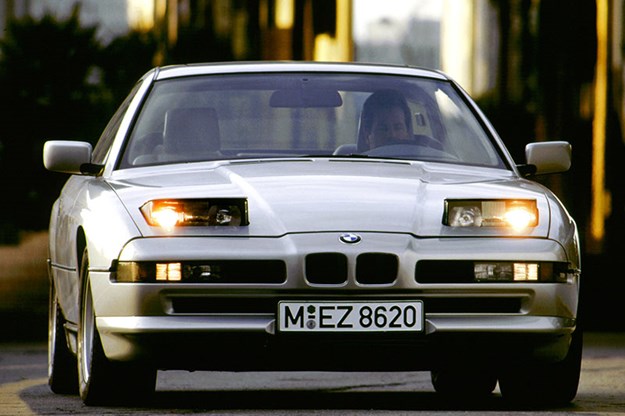 Pop-up lights and broad stance distinguish the 8-Series
Pop-up lights and broad stance distinguish the 8-Series
While its retro wedge shape was incredibly data driven, it remains a visually striking thing today, with its low and wide body. Its scientific design gave it an incredibly low drag coefficient; 0.29 to be exact, or the same as Porsche’s futuristic 918 hypercar of 2013.
Upon launch, the sole model was initially offered with the 5.0lt V12-powered 850i mated to a specially developed six-speed manual or a four-speed automatic as an option.
The 850i cost close to a whopping AU$200,000 when new, and that’s in 1990s dollars!
| Read next: Cars at house prices - revcounter
The car featured five-link rear suspension, stability control and traction control, speed-sensitive power steering, and you could even find an electronic damper control system on the options list. Whatever you might expect as standard in a modern sporting luxury car, could largely be found in this early 90s super coupe.
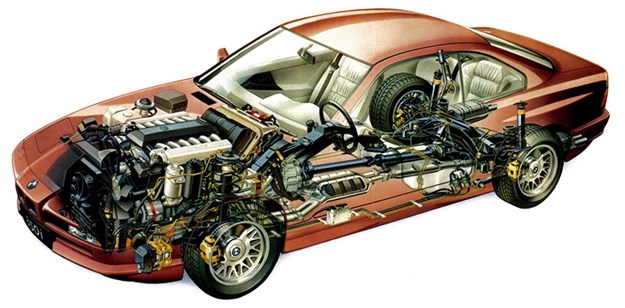 The same V12 found its way into the McLaren F1
The same V12 found its way into the McLaren F1
Even though the V12 was capable of 221kW, a large number of would-be buyers turned away thinking they could get something faster for their hard-earned money than the floaty E31. Bear in mind at the time, a Ferrari 348tb could be had for only a little more money.
In response, the V12 later swelled in displacement to 5.4lt around the same time the 850i badge changed to the 850Ci. Power similarly grew to 240kW. Then came the ultimate: the 5.6lt CSi, with 280kW and a six-speed manual as standard. They're worth roughly twice the price of a 'normal' 850.
But the timing of the V12 flagship was unfortunate and, by the time the V12 850Ci was updated, the world was well and truly feeling the effect of the 1990s recession.
In 1993, BMW introduced the 840Ci, a more frugal offering featuring a 4.0lt M60 V8 capable of 210kW when new. From mid-1995, the 840Ci transitioned to a larger 4.4lt M62 V8, producing better fuel economy and more low-down torque. Peak power however, remained unchanged.

Inside, the car’s grand touring talents shone through with leather seats and a clean minimalist yet driver-focused dash. As BMW’s most opulent offering of the time, it featured many cutting-edge tech features that seemed straight out of a sci-fi movie for the time.
So, while the 8 Series was slammed in its day as an overweight, overpriced supercar failure; does it make any more sense as a retrospective, bargain classic cruiser?
Only 30,621 cars were made over its near-decade of production. And while the E31 was within reach of Prancing Horse pricetags when new, they’re one of the most affordable powerful luxury coupes today. Both V8 and V12 options can be had for $50,000. Sometimes less!
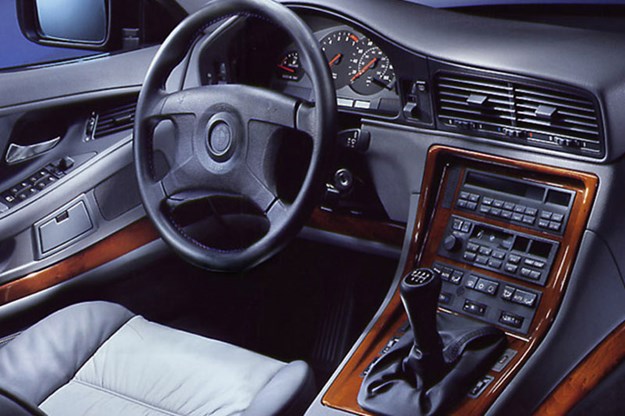 Sumptuous interior loaded with goodies
Sumptuous interior loaded with goodies
E31 WHAT'S HOT
We can already hear your concerns over the maintenance cost of such a machine, yet in practice the 8 Series is considered fairly reliable given its mechanical complexity. It actually shares many of its components with the E32 7 Series, of which there were over 300,000 produced – so parts aren’t impossible to find.
Early models are known to suffer rare engine failures due to the erosion of the material Nikasil, which coated the cylinder bores. The Nikasil bore linings however, eroded largely due to the USA’s low quality petrol, and most cars affected are long gone by now.
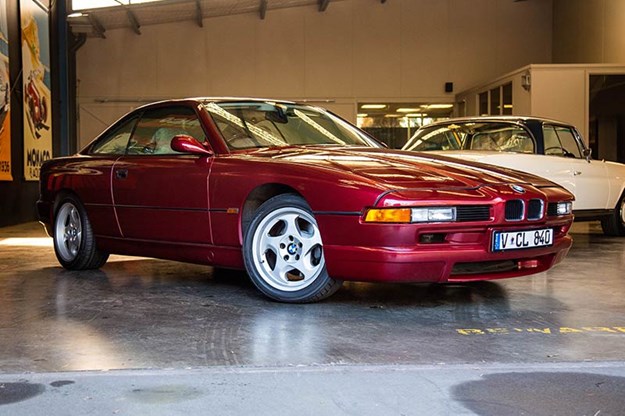
Australian-delivered cars such as this 840CI we looked over at Brooklands Classic Cars, are unlikely to have suffered such engine degradation, thanks to a life of superior Australian petrol.
Cameron Sabine of Brooklands cited "electrical gremlins" as the main problem that may befall the old 8 Series, but the 840Ci is definitely the safer option of the two.
"There are a few people who know how to work on them" he says.
Sabine also hinted that the new 8 Series set to return at the end of this year could spark renewed interest in the old E31, "in much the same way that the new [Honda] NSX sparked interest in the old cars".
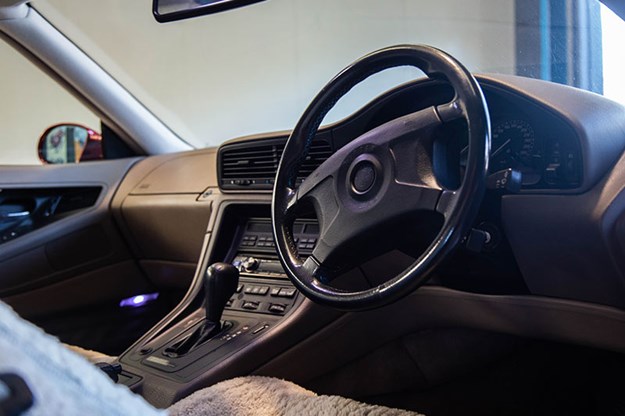
Brooklands said that prices of the E31 have been rather dormant over the past few years, with steady and modest increases. They reckon there’s plenty of upside to these cars, and we’re inclined to agree.
1990 BMW
E31 850I
Engine 4988cc
DOHC 24v V12
Power 221kW @ 5200rpm
Torque 450Nm @ 4100rpm
Gearbox 6-speed manual/4-speed automatic
Brakes Ventilated, cross-drilled discs 324mm (f), 324mm (r),
4-piston calipers
Suspension Independent, wishbone, coil springs (f), Independent, multi-link, helical spring (r)
Weight 1790kg
Unique Cars magazine Value Guides
Sell your car for free right here
Get your monthly fix of news, reviews and stories on the greatest cars and minds in the automotive world.
Subscribe

.jpg)




